1 of 14
Download to read offline
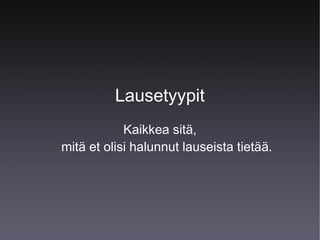
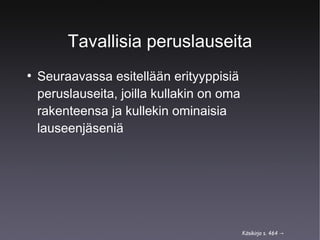
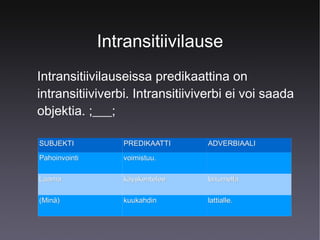
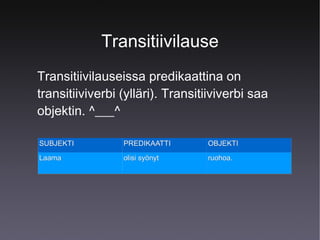
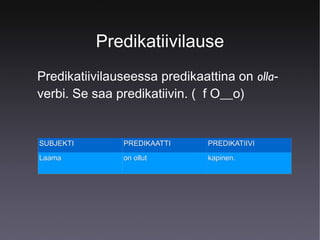
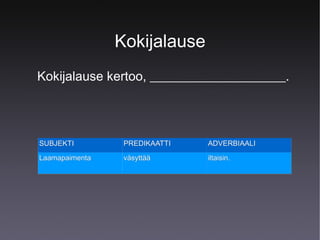




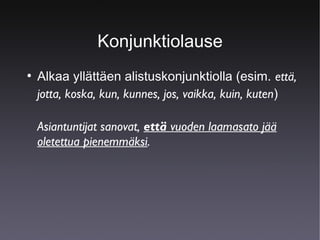
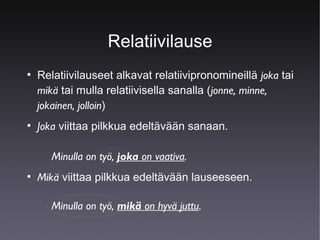
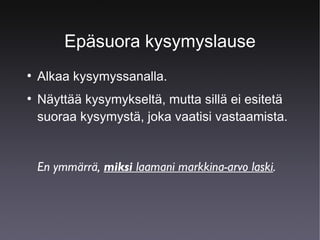

Ad
Recommended
articles
articles Dr. Anjibabu
╠²
The document discusses the usage of articles (a, an, the) in the English language. It explains that articles are used before singular countable nouns and that the determination of whether to use "a" or "an" depends on whether the next word begins with a vowel or consonant sound. It also discusses some exceptions where articles are used before uncountable nouns or proper nouns. The key information provided is about the rules for using indefinite and definite articles in the English language.Adjektiivien vertailu englannin kieless├ż (komparatiivi ja superlatiivi)
Adjektiivien vertailu englannin kieless├ż (komparatiivi ja superlatiivi)Ritva Tammi
╠²
Comparison in English language (adjectives)Future tense: Going to Vs. Will
Future tense: Going to Vs. Will Asmae Azzamouri
╠²
The document explains the differences between using 'going to' and 'will' for future tense in English, including examples and contexts for each usage. It highlights decision-making, predictions, and scheduled events, as well as variations in sentence structure for affirmative, negative, and interrogative forms. Additionally, the document includes practice exercises to reinforce understanding of these concepts.Past Tenses. Past Perfect, Past Simple and Continuous
Past Tenses. Past Perfect, Past Simple and ContinuousJos├® Antonio Romero Tena
╠²
The document discusses different past verb tenses in English including their structures, uses, and formation rules. It covers the past simple tense, past continuous tense, and past perfect simple tense. For each tense it provides the basic structure, negative and interrogative forms, common uses to describe finished or ongoing past actions, and examples for clarification.Passive grammar powerpoint
Passive grammar powerpointAngel Ingenio
╠²
The passive voice is used when the agent or doer of the action is unknown, not important, or to give importance to the object of the sentence. It is formed by using some form of 'to be' plus the past participle of the main verb. Some common uses of the passive voice include reporting information, rules, or media reports where the focus is on the topic rather than who performed the action. The passive voice can be used in all tenses and includes changes in verbs and pronouns compared to the active voice.Some, any, a lot 7.kl.
Some, any, a lot 7.kl.Agita Ozolina
╠²
This document discusses the use of quantifiers like some, any, a lot of, many, much, a few, a little, few, and little in English. It provides examples of how these quantifiers are used with countable and uncountable nouns in positive sentences, questions, and negative sentences. It also discusses the differences between a little/a few and little/few. The document then provides an example dialogue where a cook checks the items in their fridge and the quantities of different foods, using the quantifiers.Articles
Articlesaideenmarie
╠²
The document discusses the usage of articles (a, an, the) in the English language. It explains that articles are adjectives that modify nouns and there are two types of articles: definite (the) and indefinite (a/an). The definite article refers to specific or particular nouns, while the indefinite article refers to non-specific or non-particular nouns. It provides examples and guidelines for using definite vs. indefinite articles based on whether the noun is specific, singular vs. plural, countable vs. non-countable, and whether it begins with a vowel or consonant sound.Indefinite pronouns with some , any-, no-
Indefinite pronouns with some , any-, no-Carmen Olmedo Rueda
╠²
An indefinite pronoun is a pronoun that does not refer to a specific person, place, thing or idea. Some common indefinite pronouns are formed from the prefixes some-, any-, no- and every- combined with compound nouns referring to people, things, or places. These indefinite pronouns are used in affirmative and negative sentences depending on the prefix used.Simple present - formas negativa e interrogativa
Simple present - formas negativa e interrogativaBobDantas
╠²
The document discusses the simple present tense in English. It provides a chart showing the negative and interrogative forms of the simple present tense. It then explains that the negative is formed with "do/does + not" and the interrogative is formed with "do/does" at the beginning of the question. Examples are given to illustrate how to use the negative and interrogative forms in sentences.Past continuous-form-and-use3609
Past continuous-form-and-use3609torrepacheco
╠²
The document discusses the past continuous tense and how it is used to describe actions that were in progress at a specific time in the past. It provides examples of using the past continuous alone and with the past simple tense. When using past continuous and past simple together, past continuous is used for the ongoing action and past simple for the interruption. It also discusses using while with past continuous and when with past simple to indicate timing.Past tense verbs 5to
Past tense verbs 5toAnabel Milagros Montes Miranda
╠²
The document provides information about simple past tense verbs in English. It discusses the different endings used to form the past tense, including "-ed" and "-d". It provides examples of regular verbs like "jumped" and "danced". It then has exercises for students to practice changing verbs to past tense and forming sentences using past tense verbs.Present perfect
Present perfectNetzi Valdelomar Miranda
╠²
The document discusses the present perfect tense in English. It explains that the present perfect tense is formed using the auxiliary verb "have" in the present tense along with the past participle form of the main verb. It outlines three main uses of the present perfect tense: 1) actions that started in the past and continue in the present, 2) actions that occurred at an unspecified time in the past, and 3) repeated actions in the past. The document also discusses the use of adverbs like "ever", "already", "yet", and "recently" with the present perfect tense and explains the difference between using "for" and "since" to indicate periods of time versus points in time.Past Perfect
Past Perfectcoordinaciondeingles
╠²
The document discusses the past perfect tense, which is used to indicate that an action was completed before something else in the past occurred. It provides examples of using the past perfect tense to refer to actions that had been finished prior to other past events, such as "I had visited my sister before she went to Mexico." The construction of the past perfect tense is also explained as auxiliary verb + had + past participle.Future perfect passive
Future perfect passiveSue
╠²
The document discusses the future perfect passive tense, which is used to talk about actions or events that will be finished by a certain moment in the future. It notes that the passive voice means the subject is acted upon, and the agent is unknown. Examples are given using future perfect passive with time expressions like "by", "before", "until", and "in".Present perfect-vs-simple-past
Present perfect-vs-simple-pastvickkyleon
╠²
The document discusses the difference between the simple past and present perfect tenses. The simple past is used for finished actions at a specific time in the past, while the present perfect is used for unfinished actions or those that have relevance to the present. Some key uses of the present perfect include talking about general experiences without a specific time frame, actions that have effects in the present, and unfinished periods of time that began in the past. Examples are provided to illustrate the formation and use of these tenses.AdverbsHenry Kleber
╠²
O documento discute os adv├®rbios em portugu├¬s. Explica que adv├®rbios descrevem a├¦├Ąes e modificam adjetivos ou ora├¦├Ąes, e fornece exemplos de diferentes tipos de adv├®rbios, incluindo adv├®rbios de modo, lugar e tempo. Alerta sobre a ordem correta quando v├Īrios adv├®rbios est├Żo presentes na mesma frase e discute palavras que podem ser tanto adjetivos quanto adv├®rbios.New past continuous tense
New past continuous tensesheilabeca
╠²
The document discusses the past continuous tense in English. It explains that the past continuous tense, also called the past progressive tense, is used to describe actions that were ongoing or in progress at a specific time in the past. It contrasts the past continuous with the simple past tense. Some key uses of the past continuous include describing interrupted or simultaneous past actions. The document also notes certain verbs like thinking or wanting that are generally not used in the continuous tenses and provides examples of mixed verbs that can be used either continuously or non-continuously depending on their meaning in specific contexts.GR Lecture 1: Parts of Speech
GR Lecture 1: Parts of Speechgmcope14
╠²
This document defines and provides examples of the main parts of speech in English including nouns, pronouns, verbs, adjectives, adverbs, prepositions, conjunctions, and interjections. It also provides a short practice identifying the part of speech of bolded words based on their use in sentences.FUTURE CONTINUOUS
FUTURE CONTINUOUSFany Cornejo
╠²
The document discusses the future continuous tense in English grammar. It is formed using "will be" plus the present participle ("-ing" form) of the main verb. The future continuous describes an action that will be ongoing or in progress at a specific time in the future. It can specify the time of the action, describe an action continuing into the future from the present, or indicate an action will be interrupted by another future action. Examples are provided to illustrate different uses of the future continuous tense.Can and-could
Can and-couldGabriela Reyes
╠²
The document discusses the uses of the verbs "can" and "could" in English. It explains that can is used to express present ability and permission, while could expresses past ability, uncertainty, indirect speech, and polite requests. It provides examples for each use case.The english subjunctive
The english subjunctiveAnne Agard
╠²
The document discusses the English subjunctive verb mood. It notes that the subjunctive was used more frequently in Shakespeare's time but is now disappearing from modern English. However, the subjunctive is still used in certain contexts after verbs or adjectives expressing necessity, advice, or urgency. The present subjunctive has the base verb form, while the past subjunctive looks like the simple past tense except for the verb "to be." The subjunctive is commonly used in conditional sentences and after the verb "wish." Rytmi on runon verenkierto
Rytmi on runon verenkiertoMiiaTee
╠²
Kirjoittamisen perusopintojen runouskurssi Ty├Čv├żen Akatemia 2013 copyright Miia ToivioMore Related Content
What's hot (20)
Articles
Articlesaideenmarie
╠²
The document discusses the usage of articles (a, an, the) in the English language. It explains that articles are adjectives that modify nouns and there are two types of articles: definite (the) and indefinite (a/an). The definite article refers to specific or particular nouns, while the indefinite article refers to non-specific or non-particular nouns. It provides examples and guidelines for using definite vs. indefinite articles based on whether the noun is specific, singular vs. plural, countable vs. non-countable, and whether it begins with a vowel or consonant sound.Indefinite pronouns with some , any-, no-
Indefinite pronouns with some , any-, no-Carmen Olmedo Rueda
╠²
An indefinite pronoun is a pronoun that does not refer to a specific person, place, thing or idea. Some common indefinite pronouns are formed from the prefixes some-, any-, no- and every- combined with compound nouns referring to people, things, or places. These indefinite pronouns are used in affirmative and negative sentences depending on the prefix used.Simple present - formas negativa e interrogativa
Simple present - formas negativa e interrogativaBobDantas
╠²
The document discusses the simple present tense in English. It provides a chart showing the negative and interrogative forms of the simple present tense. It then explains that the negative is formed with "do/does + not" and the interrogative is formed with "do/does" at the beginning of the question. Examples are given to illustrate how to use the negative and interrogative forms in sentences.Past continuous-form-and-use3609
Past continuous-form-and-use3609torrepacheco
╠²
The document discusses the past continuous tense and how it is used to describe actions that were in progress at a specific time in the past. It provides examples of using the past continuous alone and with the past simple tense. When using past continuous and past simple together, past continuous is used for the ongoing action and past simple for the interruption. It also discusses using while with past continuous and when with past simple to indicate timing.Past tense verbs 5to
Past tense verbs 5toAnabel Milagros Montes Miranda
╠²
The document provides information about simple past tense verbs in English. It discusses the different endings used to form the past tense, including "-ed" and "-d". It provides examples of regular verbs like "jumped" and "danced". It then has exercises for students to practice changing verbs to past tense and forming sentences using past tense verbs.Present perfect
Present perfectNetzi Valdelomar Miranda
╠²
The document discusses the present perfect tense in English. It explains that the present perfect tense is formed using the auxiliary verb "have" in the present tense along with the past participle form of the main verb. It outlines three main uses of the present perfect tense: 1) actions that started in the past and continue in the present, 2) actions that occurred at an unspecified time in the past, and 3) repeated actions in the past. The document also discusses the use of adverbs like "ever", "already", "yet", and "recently" with the present perfect tense and explains the difference between using "for" and "since" to indicate periods of time versus points in time.Past Perfect
Past Perfectcoordinaciondeingles
╠²
The document discusses the past perfect tense, which is used to indicate that an action was completed before something else in the past occurred. It provides examples of using the past perfect tense to refer to actions that had been finished prior to other past events, such as "I had visited my sister before she went to Mexico." The construction of the past perfect tense is also explained as auxiliary verb + had + past participle.Future perfect passive
Future perfect passiveSue
╠²
The document discusses the future perfect passive tense, which is used to talk about actions or events that will be finished by a certain moment in the future. It notes that the passive voice means the subject is acted upon, and the agent is unknown. Examples are given using future perfect passive with time expressions like "by", "before", "until", and "in".Present perfect-vs-simple-past
Present perfect-vs-simple-pastvickkyleon
╠²
The document discusses the difference between the simple past and present perfect tenses. The simple past is used for finished actions at a specific time in the past, while the present perfect is used for unfinished actions or those that have relevance to the present. Some key uses of the present perfect include talking about general experiences without a specific time frame, actions that have effects in the present, and unfinished periods of time that began in the past. Examples are provided to illustrate the formation and use of these tenses.AdverbsHenry Kleber
╠²
O documento discute os adv├®rbios em portugu├¬s. Explica que adv├®rbios descrevem a├¦├Ąes e modificam adjetivos ou ora├¦├Ąes, e fornece exemplos de diferentes tipos de adv├®rbios, incluindo adv├®rbios de modo, lugar e tempo. Alerta sobre a ordem correta quando v├Īrios adv├®rbios est├Żo presentes na mesma frase e discute palavras que podem ser tanto adjetivos quanto adv├®rbios.New past continuous tense
New past continuous tensesheilabeca
╠²
The document discusses the past continuous tense in English. It explains that the past continuous tense, also called the past progressive tense, is used to describe actions that were ongoing or in progress at a specific time in the past. It contrasts the past continuous with the simple past tense. Some key uses of the past continuous include describing interrupted or simultaneous past actions. The document also notes certain verbs like thinking or wanting that are generally not used in the continuous tenses and provides examples of mixed verbs that can be used either continuously or non-continuously depending on their meaning in specific contexts.GR Lecture 1: Parts of Speech
GR Lecture 1: Parts of Speechgmcope14
╠²
This document defines and provides examples of the main parts of speech in English including nouns, pronouns, verbs, adjectives, adverbs, prepositions, conjunctions, and interjections. It also provides a short practice identifying the part of speech of bolded words based on their use in sentences.FUTURE CONTINUOUS
FUTURE CONTINUOUSFany Cornejo
╠²
The document discusses the future continuous tense in English grammar. It is formed using "will be" plus the present participle ("-ing" form) of the main verb. The future continuous describes an action that will be ongoing or in progress at a specific time in the future. It can specify the time of the action, describe an action continuing into the future from the present, or indicate an action will be interrupted by another future action. Examples are provided to illustrate different uses of the future continuous tense.Can and-could
Can and-couldGabriela Reyes
╠²
The document discusses the uses of the verbs "can" and "could" in English. It explains that can is used to express present ability and permission, while could expresses past ability, uncertainty, indirect speech, and polite requests. It provides examples for each use case.The english subjunctive
The english subjunctiveAnne Agard
╠²
The document discusses the English subjunctive verb mood. It notes that the subjunctive was used more frequently in Shakespeare's time but is now disappearing from modern English. However, the subjunctive is still used in certain contexts after verbs or adjectives expressing necessity, advice, or urgency. The present subjunctive has the base verb form, while the past subjunctive looks like the simple past tense except for the verb "to be." The subjunctive is commonly used in conditional sentences and after the verb "wish."Viewers also liked (20)
Rytmi on runon verenkierto
Rytmi on runon verenkiertoMiiaTee
╠²
Kirjoittamisen perusopintojen runouskurssi Ty├Čv├żen Akatemia 2013 copyright Miia ToivioMit├ż on runon kuvallisuus
Mit├ż on runon kuvallisuusMiiaTee
╠²
Kirjoittamisen perusopintojen runouskurssi Ty├Čv├żen Akatemia 2013 copyright Miia Toivio9 civics 3.8.11
9 civics 3.8.11rahulmcoolnsmart
╠²
The document provides case studies of various countries and incidents related to democracy. It analyzes aspects of elections and governance in Pakistan, China, Mexico, Saudi Arabia, Estonia, Fiji, Zimbabwe, Bhutan, Sri Lanka, Nepal, Bihar and Bangladesh. Key aspects of democracy that were violated include lack of free and fair elections, denial of voting rights, manipulation of electoral and legal processes, suppression of opposition, and lack of independent media. Some countries preserved democratic aspects like elections and rule by elected representatives.Osi model
Osi modelBhawana Singh
╠²
The document describes the 7 layers of the OSI model from application layer to physical layer. The application layer allows users to interact with applications like web browsers and email clients. The presentation layer formats data like text, images, video, and sound. The session layer creates and maintains separate sessions for different applications. The transport layer determines whether to send data reliably or unreliably based on importance. The network layer assigns IP addresses and routes data. The data link layer checks MAC addresses and data integrity. The physical layer generates electrical pulses to send data through cables. Data moves through each layer from source to destination PC.Cicada selling-seo
Cicada selling-seoNed Wells
╠²
The document discusses search engine optimization (SEO) and provides an overview of how to effectively implement an SEO strategy. It outlines the key steps as understanding the client's business, auditing their website to identify gaps, prioritizing opportunities, implementing changes, measuring results, and iterating the process. The document emphasizes that SEO requires a team approach involving both technical and strategic expertise to properly understand goals, make improvements, and track outcomes.Presentation of arg
Presentation of argTuyß║┐t Phß║Īm
╠²
Nhu cß║¦u rau cß╗¦ quß║Ż tß║Īi Nhß║Łt Bß║Żn rß║źt cao, khoß║Żng 17 triß╗ću tß║źn mß╗Śi n─ām, tß║Īo cŲĪ hß╗Öi cho xuß║źt khß║®u tß╗½ Viß╗ćt Nam nhß╗Ø v├Āo lß╗Żi thß║┐ n├┤ng nghiß╗ćp. Tuy nhi├¬n, Viß╗ćt Nam gß║Ęp th├Īch thß╗®c vß╗ü chß║źt lŲ░ß╗Żng sß║Żn phß║®m v├Ā cß║Īnh tranh vß╗øi c├Īc nŲ░ß╗øc nhŲ░ Trung Quß╗æc v├Ā Mß╗╣. C├┤ng ty Antesco ─æ├Ż x├óy dß╗▒ng ch├Łnh s├Īch chß║źt lŲ░ß╗Żng v├Ā mß║½u m├Ż sß║Żn phß║®m ph├╣ hß╗Żp vß╗øi ti├¬u chuß║®n Nhß║Łt Bß║Żn ─æß╗ā tß╗æi Ų░u h├│a xuß║źt khß║®u, nhŲ░ng vß║½n cß║¦n cß║Żi thiß╗ćn ─æa dß║Īng h├│a sß║Żn phß║®m v├Ā bao b├¼ hß║źp dß║½n hŲĪn.Powerpoint act 1
Powerpoint act 1iamemilioh
╠²
The document provides guidance on effectively using PowerPoint for presentations. It discusses:
1) Understanding your audience and venue when designing slides, such as using large fonts that are readable from all seats in the lecture hall.
2) Organizing slides with clear titles and limiting content to maintain audience focus on what is being presented.
3) Testing equipment ahead of time to avoid technical difficulties that could disrupt the presentation.Art of Digital London August 2012 - Crowdfunding, Patrick Hussey
Art of Digital London August 2012 - Crowdfunding, Patrick Hussey ArtofDigitalLondon
╠²
Crowdfunding platforms are increasingly being used to fund civic projects through partnerships between governments, brands, and crowds. This represents a shift from funding based on aesthetic appeals to individual donors, to an interactive and collective model. Examples given include platforms like Stompy, App,net, and Pebble that have used crowdfunding to fund projects. While the OUYA gaming console may have been poor technology, crowdfunding allows for open development of projects. Crowdfunding brings together aspects of capitalism, communism, and mass appeal through campaigns involving cute animals like cats.JA3 - kurssin aloitus
JA3 - kurssin aloitusTuure Puurunen
╠²
Kertausosio JA3-kurssin alkuun. Tuskin ket├ż├żn kiinnostaa, mutta saahan sit├ż katsoa.Ad
Similar to Lausetyypit (10)
ENA2 (lukion 2-kurssin kielioppitiivistelm├ż)
ENA2 (lukion 2-kurssin kielioppitiivistelm├ż)Ritva Tammi
╠²
lukion englannin 2-kurssin kielioppi: peruss├ż├żnn├ČtLiitepartikkelit ja puhekieli
Liitepartikkelit ja puhekieliMarja Ahola
╠²
Koonnut Marja Ahola 200-luvun alussa, pit├żisi p├żivitt├ż├ż.Lauseenvastikkeet
LauseenvastikkeetMarja Ahola
╠²
18.10.2010 Yleist├ż lauseenvastikkeista, partisiipeista ja kertovista lauseenvastikkeistaAd
Recently uploaded (20)
Chemical and Synthetic Approaches in Membrane Biology 1st Edition Arun K. Shu...
Chemical and Synthetic Approaches in Membrane Biology 1st Edition Arun K. Shu...zbnrqgjhz369
╠²
Chemical and Synthetic Approaches in Membrane Biology 1st Edition Arun K. Shukla (Eds.)
Chemical and Synthetic Approaches in Membrane Biology 1st Edition Arun K. Shukla (Eds.)
Chemical and Synthetic Approaches in Membrane Biology 1st Edition Arun K. Shukla (Eds.)Applications of Internet of Things Proceedings of ICCCIOT 2020 Jyotsna K. Mandal
Applications of Internet of Things Proceedings of ICCCIOT 2020 Jyotsna K. Mandalwmfydsp043
╠²
Applications of Internet of Things Proceedings of ICCCIOT 2020 Jyotsna K. Mandal
Applications of Internet of Things Proceedings of ICCCIOT 2020 Jyotsna K. Mandal
Applications of Internet of Things Proceedings of ICCCIOT 2020 Jyotsna K. MandalHigh Dynamic Range Video Concepts Technologies and Applications Alan Chalmers
High Dynamic Range Video Concepts Technologies and Applications Alan Chalmersucgjfxy952
╠²
High Dynamic Range Video Concepts Technologies and Applications Alan Chalmers
High Dynamic Range Video Concepts Technologies and Applications Alan Chalmers
High Dynamic Range Video Concepts Technologies and Applications Alan ChalmersManaging for Quality and Performance Excellence 9th Edition Evans Solutions M...
Managing for Quality and Performance Excellence 9th Edition Evans Solutions M...lqkhkuy2675
╠²
Managing for Quality and Performance Excellence 9th Edition Evans Solutions Manual
Managing for Quality and Performance Excellence 9th Edition Evans Solutions Manual
Managing for Quality and Performance Excellence 9th Edition Evans Solutions ManualLabor Relations Process 11th Edition Holley Solutions Manual
Labor Relations Process 11th Edition Holley Solutions Manualcdalvxmnep197
╠²
Labor Relations Process 11th Edition Holley Solutions Manual
Labor Relations Process 11th Edition Holley Solutions Manual
Labor Relations Process 11th Edition Holley Solutions ManualDifference Equations Theory Applications and Advanced Topics 3rd Edition Rona...
Difference Equations Theory Applications and Advanced Topics 3rd Edition Rona...jxkwwntsa827
╠²
Difference Equations Theory Applications and Advanced Topics 3rd Edition Ronald E. Mickens
Difference Equations Theory Applications and Advanced Topics 3rd Edition Ronald E. Mickens
Difference Equations Theory Applications and Advanced Topics 3rd Edition Ronald E. MickensImperial Gullies Soil Erosion and Conservation in Lesotho Ecology History 1st...
Imperial Gullies Soil Erosion and Conservation in Lesotho Ecology History 1st...vraqkpskoc8429
╠²
Imperial Gullies Soil Erosion and Conservation in Lesotho Ecology History 1st Edition Showers
Imperial Gullies Soil Erosion and Conservation in Lesotho Ecology History 1st Edition Showers
Imperial Gullies Soil Erosion and Conservation in Lesotho Ecology History 1st Edition ShowersAfrican Perspectives on Ethics for Healthcare Professionals Nico Nortj├®
African Perspectives on Ethics for Healthcare Professionals Nico Nortj├®eqwcsxbmnh1083
╠²
African Perspectives on Ethics for Healthcare Professionals Nico Nortj├®
African Perspectives on Ethics for Healthcare Professionals Nico Nortj├®
African Perspectives on Ethics for Healthcare Professionals Nico Nortj├®Solution Manual for Principles of Economics 7th Edition Mankiw 128516587X 978...
Solution Manual for Principles of Economics 7th Edition Mankiw 128516587X 978...neryjnxvgb144
╠²
Solution Manual for Principles of Economics 7th Edition Mankiw 128516587X 9781285165875
Solution Manual for Principles of Economics 7th Edition Mankiw 128516587X 9781285165875
Solution Manual for Principles of Economics 7th Edition Mankiw 128516587X 9781285165875MM 3rd Edition Dawn Iacobucci Solutions Manual
MM 3rd Edition Dawn Iacobucci Solutions Manualhsawptzvtm549
╠²
MM 3rd Edition Dawn Iacobucci Solutions Manual
MM 3rd Edition Dawn Iacobucci Solutions Manual
MM 3rd Edition Dawn Iacobucci Solutions ManualHealth systems science Second Edition. Edition Jeffrey M. Borkan (Editor)
Health systems science Second Edition. Edition Jeffrey M. Borkan (Editor)kakzzmxm4272
╠²
Health systems science Second Edition. Edition Jeffrey M. Borkan (Editor)
Health systems science Second Edition. Edition Jeffrey M. Borkan (Editor)
Health systems science Second Edition. Edition Jeffrey M. Borkan (Editor)Pro Tools 9 Music Production Recording Editing And Mixing 1st Mike Collins
Pro Tools 9 Music Production Recording Editing And Mixing 1st Mike Collinstouyemlobet63
╠²
Pro Tools 9 Music Production Recording Editing And Mixing 1st Mike Collins
Pro Tools 9 Music Production Recording Editing And Mixing 1st Mike Collins
Pro Tools 9 Music Production Recording Editing And Mixing 1st Mike CollinsOil Gas Coal And Electricity Quarterly Statistics First Quarter 2011 Oecd
Oil Gas Coal And Electricity Quarterly Statistics First Quarter 2011 Oecdlaisincoslam
╠²
Oil Gas Coal And Electricity Quarterly Statistics First Quarter 2011 Oecd
Oil Gas Coal And Electricity Quarterly Statistics First Quarter 2011 Oecd
Oil Gas Coal And Electricity Quarterly Statistics First Quarter 2011 OecdI of the Vortex From Neurons to Self 1st Edition Rodolfo R. Llinas
I of the Vortex From Neurons to Self 1st Edition Rodolfo R. Llinasvwsictw808
╠²
I of the Vortex From Neurons to Self 1st Edition Rodolfo R. Llinas
I of the Vortex From Neurons to Self 1st Edition Rodolfo R. Llinas
I of the Vortex From Neurons to Self 1st Edition Rodolfo R. LlinasManagement Preliminary Edition 1st Edition Gulati Test Bank
Management Preliminary Edition 1st Edition Gulati Test Bankkkfjsdnlz7664
╠²
Management Preliminary Edition 1st Edition Gulati Test Bank
Management Preliminary Edition 1st Edition Gulati Test Bank
Management Preliminary Edition 1st Edition Gulati Test BankMarketing 12th Edition Lamb Solutions Manual
Marketing 12th Edition Lamb Solutions Manualzlsgnmhl701
╠²
Marketing 12th Edition Lamb Solutions Manual
Marketing 12th Edition Lamb Solutions Manual
Marketing 12th Edition Lamb Solutions ManualAuditing 7E 7th Edition Audrey A. Gramling & Larry E. Rittenberg & Karla M. J...
Auditing 7E 7th Edition Audrey A. Gramling & Larry E. Rittenberg & Karla M. J...ajoffyyc353
╠²
Auditing 7E 7th Edition Audrey A. Gramling & Larry E. Rittenberg & Karla M. Johnstone
Auditing 7E 7th Edition Audrey A. Gramling & Larry E. Rittenberg & Karla M. Johnstone
Auditing 7E 7th Edition Audrey A. Gramling & Larry E. Rittenberg & Karla M. JohnstoneBioinformatics Research and Applications Fa Zhang
Bioinformatics Research and Applications Fa Zhangiokpmjizl034
╠²
Bioinformatics Research and Applications Fa Zhang
Bioinformatics Research and Applications Fa Zhang
Bioinformatics Research and Applications Fa ZhangEconomics Today 19th Edition Miller Solutions Manual
Economics Today 19th Edition Miller Solutions Manualwyycvzek065
╠²
Economics Today 19th Edition Miller Solutions Manual
Economics Today 19th Edition Miller Solutions Manual
Economics Today 19th Edition Miller Solutions ManualSupply Chain Management: A Global Perspective, 2nd Edition
Supply Chain Management: A Global Perspective, 2nd Editionqtyigwcw2900
╠²
Supply Chain Management: A Global Perspective, 2nd Edition
Supply Chain Management: A Global Perspective, 2nd Edition
Supply Chain Management: A Global Perspective, 2nd EditionLausetyypit
- 1. Lausetyypit Kaikkea sit├ż, mit├ż et olisi halunnut lauseista tiet├ż├ż.
- 2. Tavallisia peruslauseita ŌŚÅ Seuraavassa esitell├ż├żn erityyppisi├ż peruslauseita, joilla kullakin on oma rakenteensa ja kullekin ominaisia lauseenj├żseni├ż K├żsikirja s. 464 ŌåÆ
- 3. Intransitiivilause Intransitiivilauseissa predikaattina on intransitiiviverbi. Intransitiiviverbi ei voi saada objektia. ;___; SUBJEKTI PREDIKAATTI ADVERBIAALI Pahoinvointi voimistuu. Laama k├żyskentelee laitumella (Min├ż) kuukahdin lattialle.
- 4. Transitiivilause Transitiivilauseissa predikaattina on transitiiviverbi (yll├żri). Transitiiviverbi saa objektin. ^___^ SUBJEKTI PREDIKAATTI OBJEKTI Laama olisi sy├Čnyt ruohoa.
- 5. Predikatiivilause Predikatiivilauseessa predikaattina on ollaverbi. Se saa predikatiivin. ( f O__o) SUBJEKTI PREDIKAATTI PREDIKATIIVI Laama on ollut kapinen.
- 8. Eksistentiaalilause Eksitentiaalilause kertoo jonkin asian olemassaolosta. ADVERBIAALI PREDIKAATTI SUBJEKTI Aitauksesta katosi laamoja. P├Čyd├żll├ż on ikiliikkuja.
- 9. KV s. 13 t. A (ylempi) ŌŚÅ Tiivistykseksi ŌŚÅ Intransitiivilause: S + P (+ Advli) ŌŚÅ Transitiivilause: S + P + O ŌŚÅ Predikatiivilause: S + Olla + Predvi ŌŚÅ Kokijalause: kertoo subjektin kokemuksista ŌŚÅ Omistuslause: omistuksen ilmaiseminen ŌŚÅ Eksitentiaalilause: kertoo olemassaolosta
- 10. SIVULAUSETYYPIT ŌŚÅ T├żss├ż osiossa k├żsittelemme kolme sivulausetyyppi├ż ŌŚÅ Konjuktiolause ŌŚÅ Relatiivilause ŌŚÅ Ep├żsuora kysymyslause
- 11. Konjunktiolause ŌŚÅ Alkaa yll├żtt├żen alistuskonjunktiolla (esim. ett├ż, jotta, koska, kun, kunnes, jos, vaikka, kuin, kuten) Asiantuntijat sanovat, ett├ż vuoden laamasato j├ż├ż oletettua pienemm├żksi.
- 12. Relatiivilause ŌŚÅ ŌŚÅ Relatiivilauseet alkavat relatiivipronomineill├ż joka tai mik├ż tai mulla relatiivisella sanalla (jonne, minne, jokainen, jolloin) Joka viittaa pilkkua edelt├żv├ż├żn sanaan. Minulla on ty├Č, joka on vaativa. ŌŚÅ Mik├ż viittaa pilkkua edelt├żv├ż├żn lauseeseen. Minulla on ty├Č, mik├ż on hyv├ż juttu.
- 13. Ep├żsuora kysymyslause ŌŚÅ ŌŚÅ Alkaa kysymyssanalla. N├żytt├ż├ż kysymykselt├ż, mutta sill├ż ei esitet├ż suoraa kysymyst├ż, joka vaatisi vastaamista. En ymm├żrr├ż, miksi laamani markkina-arvo laski.
- 14. KV s. 13: AŌåÆ (alempi)
Editor's Notes
- #2: {}
